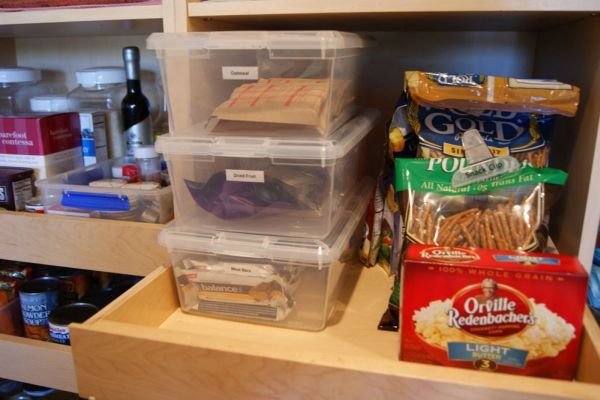Pantry of a kitchen can be compared to the memory unit of your computer. If this section is mismanaged the related efficiency of your kitchen is correspondingly reduced. How so you ask? Well, for starters, a disorganized pantry leads to misplacement of perishable food stuff which not only results in frustration but also wastage of food, money and time. Furthermore, there is always a chance of external invasions of organisms, starting from lowly ants to dangerous vermin. So, without further ado, let us go through a few easy tips that would help in keeping your pantry organized, accessible and safe.
1. Inventory

Inventory is the key word when you are stocking on your pantry or even when you are checking your pantry. This inventory list should contain the types of items and their individual quantities. In fact, you can opt for a more comprehensive process, where you input and save your list in a portable electronic device like a tablet (or even a laptop or computer). This can certainly help in future references, when you are restocking or cross-checking your pantry for available food items (which should be done for every month).
2. Getting rid of old food

The very next step after an inventory is taken entails – the removal of already old food items. In most cases, we are not too keen on throwing out costly food items. However, in terms of biology, even old items that look good from outside might have bacterial invasions going on inside. So, it is always safe to part with your out-of-date stock, rather than take a silly risk for some exotic dish.
3. Arranging the food items

This is perhaps the most important tip for improving the accessibility of your pantry. You should arrange the food items along the shelves according to their types and frequency of usage. For example, daily used stuff like coffee, sugar, ketchup and salt can be kept at the mid-level, thus allowing you to easily fetch them when required. Following the same notion, you can keep your cereal products, canned products and preservatives at their own specific locations. And, as for heavier products like bottled water, bottled soda and milk cartons, it is safe to store them at the bottom-most level where they are less likely to spill or fall.
4. Mode of storing

Small shelving units are always better for micro-managing your stock. Moreover, you can keep tiny packaged items like sachets, herb containers and condiment packets collectively in a singular small box for easy accessibility and safe keeping. For storing other perishable items, you should opt for sealed plastic containers, as they have the ability to mitigate spoilage from pest and weevil invasions. A good tip in such cases is re-using those very same commercial packages that purchased sugar and rice comes in. These jars and containers generally have screw tops and tight caps, and consequently can be cleaned and used as air-tight storing units for a variety of perishable food stuff.
5. Re-storing your food items after their usage

This tip should be seen as a follow-up to your earlier steps. It is all easy and good to store your items when you have bought them from the shop. However, in most cases, the mismanagement occurs after you have started using the items in the kitchen. A simple solution entails this process – FIFO (first-in, first-out), an abstraction originally related to ways of organizing data. As the name suggests, you should use up the items you have bought earlier. This reduces the load on your pantry. Moreover, you can use labeling as a means to identify the items you need to access first (based on their purchased dates).
6. Some items should be totally avoided in pantries

Yes, we are talking about heat sensitive items like butter, chocolate and eggs. One should remember that a pantry is not a refrigerator where regulated cold temperature mitigates the effect of outside climate. So, items like chocolate and butter can easily melt (if you don’t keep in costlier heat-resistant conditioners) in even normal conditions. This not only ruins the product, but also relates to the undesirable possibility of spoiling other items in your pantry.
7. Avoid storing items close to the pantry

Many of us lazy bums tend to use the floor in front of the pantry as a storing area. As the days go by in the month, the stack in the front gets piled up, thus considerably reducing the accessibility of the whole pantry scope. And, even beyond organization criteria, food stuff stored on floor can have direct contact with organisms like pests and other vermin from their hidden lairs along the ground works.
8. Periodic cleaning of your pantry

Dust, cobwebs, debris and food residues – these are the common harmful matter that tend to accumulate in your pantry. So, as a precaution, it is always safe to clean your pantry at least once every week. And, you should also take care to properly store items like sugar and bread (they attract more ants and vermin) in sealed containers. As for food residues, many fine types of condiments and herbs can spill, which leaves their odor behind in the pantry sections. You should attempt to clean these sections first, so as to prevent the essence from spreading and spoiling other parts of the pantry.



